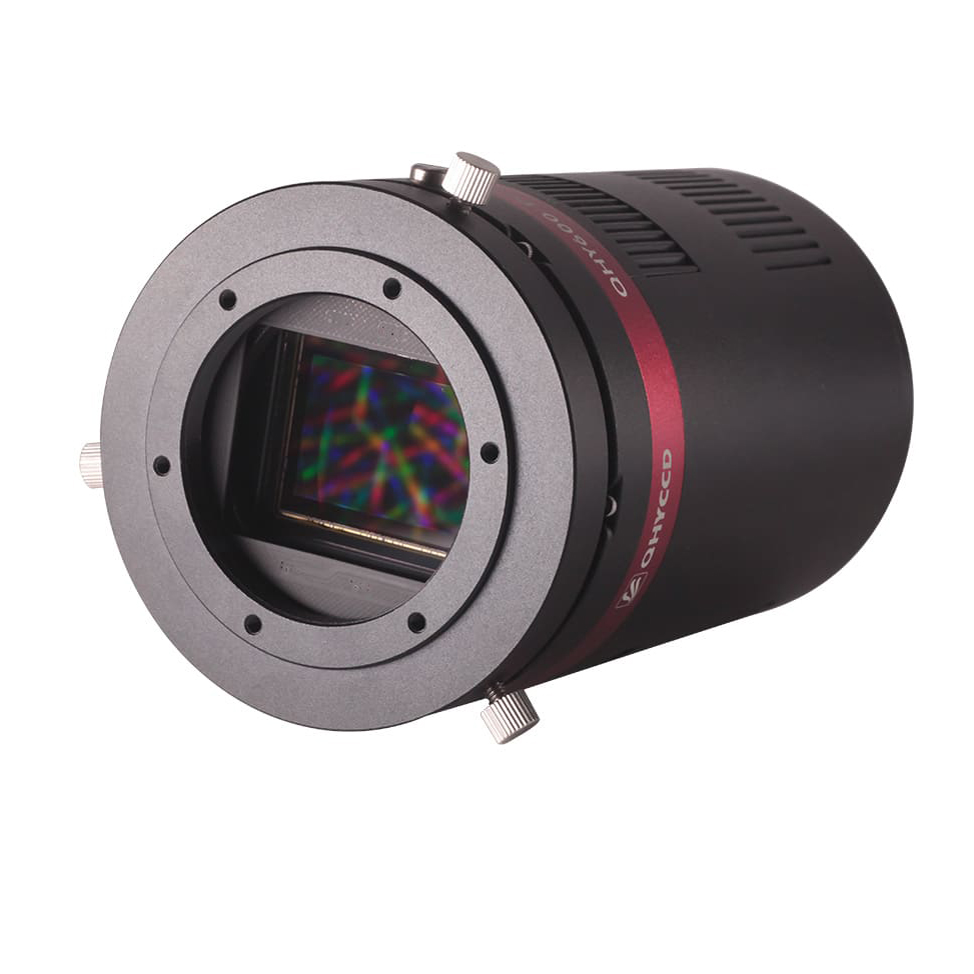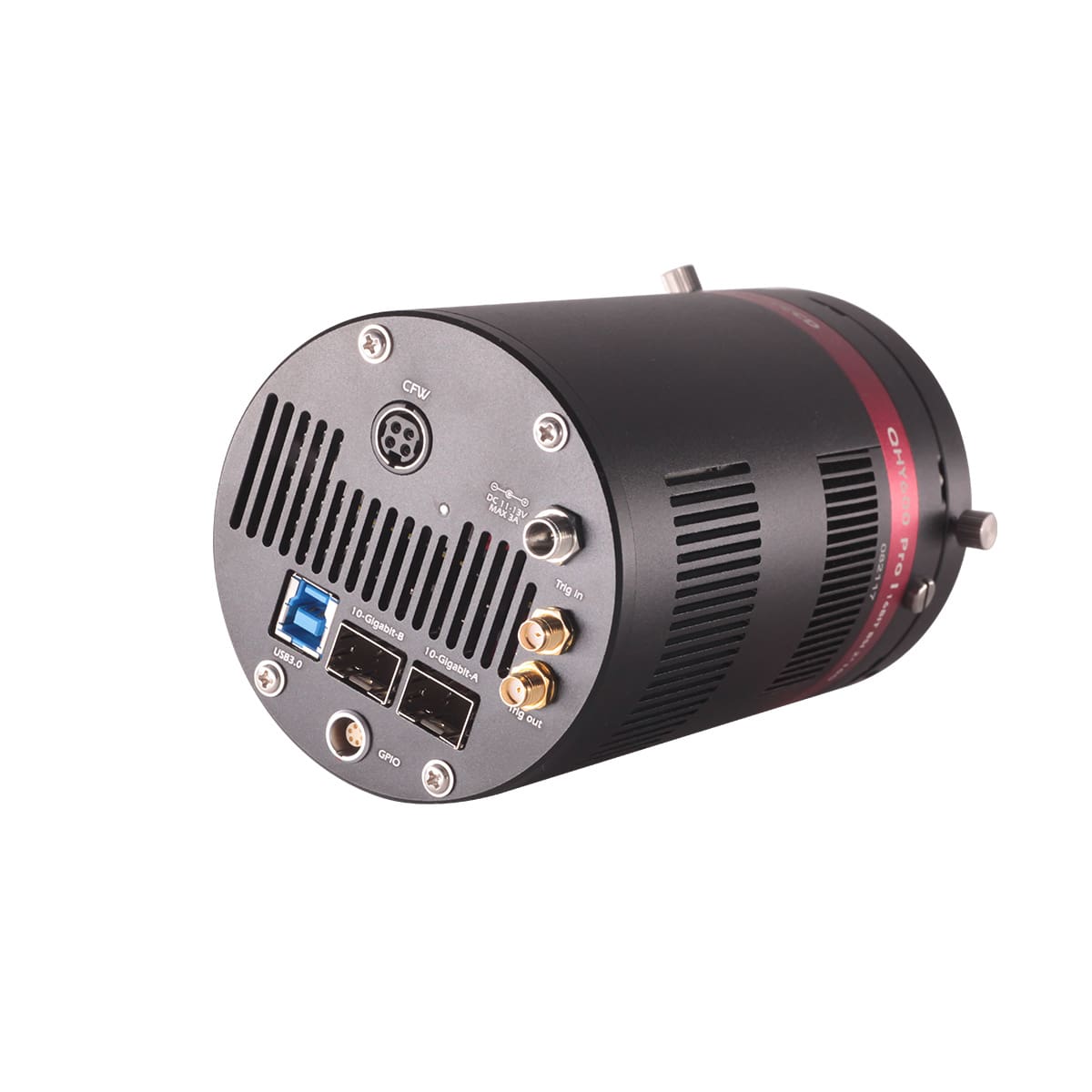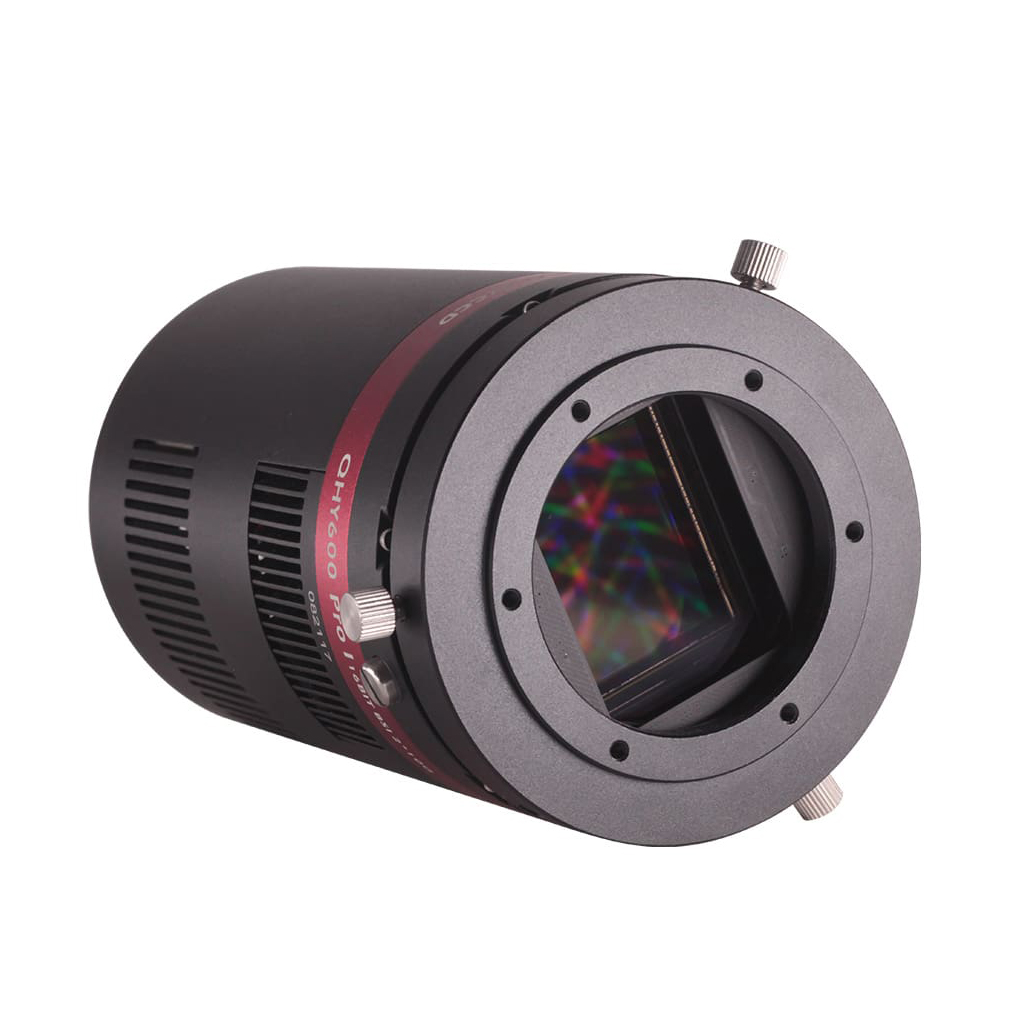QHY QHY600M Pro II Mono Cooled Full Frame Camera with IMX455 & Camera Link Interface
QHY CMOS Scientific Cameras for the Ultimate in Imaging Performance
QHYCCD Scientific Cameras offer the latest technology in scientific imaging at reasonable prices. Scientific CMOS image sensors offer extremely low noise, rapid frame rates, wide dynamic range, high quantum efficiency, high resolution, and a large field of view simultaneously in one image. In this sense, while QHYCCD cameras made for astronomy clearly fit the definition of scientific cameras, we differentiate our scientific camera models based on additional features not found on similar models used for astro-imaging.
QHYCCD Scientific Cameras not only exhibit extremely low noise, high quantum efficiency and other scientific CMOS characteristics, but also offer large area, high-resolution sensors, SWIR sensors, polarized light sensors, GPS enabled timing, external triggers, field programmable gate arrays, a 2x10GB fiber optic computer interface and water cooling options.
The QHY600 Pro II is very similar to the QHY600 Pro I, except that it supports the professional Camera Link interface and includes two (2) CameraLink interfaces. The QHY600 Pro features the Sony IMX455, a back-illuminated full-frame (35mm format) sensor with 3.76um pixels and native 16-bit A/D. Specially designed for scientific applications, including the two 10Gbps fiber interfaces, a USB3.0 interface, two CameraLink interfaces, 2GB DDR3 memory, and 6PIN GPIO/Trig/GPS connector. The camera supports 4.0FPS 16bit full-frame readout and 10FPS 14bit full-frame readout.
The QHY600M Pro II Full Frame Camera with CameraLink Interface
This full frame PRO II mono camera has three data interfaces: USB3.0 interface, 2*10Gbps fiber interfaces, and 2*CameraLink interfaces. The 10Gbps fiber interface can get 4FPS @ 16bit full resolution and 10FPS @ 14bit full resolution frame rate under live streaming mode. The QHY600PRO also supports the Trig in/out function and GPS function. The camera has an extremely good linear response in the whole full-well range. It also has zero amplifier glow and zero RBI remains performance.
The Camera Link interface is a more suitable choice if your use involves shorter transmission distances in industrial or laboratory areas. The Camera Link interface is specifically designed for high-speed and high-resolution cameras, offering fast data transmission speeds. It is well-suited for working under conditions where there is a large amount of image data and high bandwidth requirements.
NATIVE 16BIT A/D: The new Sony sensor has native 16-bit A/D on-chip. The output is real 16-bits with 65536 levels. Compared to 12-bit and 14-bit A/D, a 16-bit A/D yields higher sample resolution and the system gain will be less than 1e-/ADU with no sample error noise and very low read noise.
BSI: One benefit of the back-illuminated CMOS structure is improved full well capacity. In the back- illuminated sensor the light is allowed to enter the photosensitive surface from the reverse side. In this case the sensor’s embedded wiring structure is below the photosensitive layer. As a result, more incoming photons strike the photosensitive layer and more electrons are generated and captured in the pixel well. This ratio of photon to electron production is called quantum efficiency. The higher the quantum efficiency the more efficient the sensor is at converting photons to electrons and hence the more sensitive the sensor is to capturing an image of something dim.
TRUE RAW Data: In the DSLR implementation there is a RAW image output, but typically it is not completely RAW. Some evidence of noise reduction and hot pixel removal is still visible on close inspection. This can have a negative effect on the image for astronomy such as the “star eater” effect. However, QHY Cameras offer TRUE RAW IMAGE OUTPUT and produces an image comprised of the original signal only, thereby maintaining the maximum flexibility for post-acquisition astronomical image processing programs and other scientific imaging applications.
ZERO AMP GLOW: This is also a zero amplifier glow camera.
COOLING & ANTI-DEW CONTROL: In addition to dual stage TE cooling, QHYCCD implements proprietary technology in hardware to control the dark current noise. The optic window has built-in dew heater and the chamber is protected from internal humidity condensation. An electric heating board for the chamber window can prevent the formation of dew.
SEALING TECHNOLOGY: Based on almost 20-year cooled camera design experience, The QHY cooled camera has implemented the sealing control solutions. The sensor itself is kept dry with our silicon gel tube socket design for control of humidity within the sensor chamber. By the way, there’s no oil leaking.
Compared to other astrophotographic products, the scientific grade “Pro” grade version has more interfaces, more functions, and higher quality to cater for the complicated needs including but not limited to: Sky Survey, Astronomical Photometric, high-resolution LCD/OLED screen inspector/color calibration. All-sky camera. Scientific Measurement, DNA sequencer, Spectrum Instrument.
A Pro scientific grade camera has the following interfaces or functions:
2*10Gbps Fiber Interface
The 2*10Gigabit Fiber Optic Interface (to be used with QHYCCD fiber optic capture card) meets the high-intensity data transmission requirements of professional fields such as professional observatories. It has the following advantages over the USB 3.0 interface:
- Higher Data Rate: Using two 10G fiber optics, it can achieve a speed of 1.6GBytes/s, while the standard USB 3.0 has a rate of 5Gbps, with an actual maximum transfer rate of 350MBytes/s.
- Very Long Transfer Distance: Fiber optic transmission can cover distances hundreds of times longer than USB 3.0. Standard USB 3.0 can only transmit up to 3 to 5 meters, and even with an active powered USB cable, it can reach up to 10 to 15 meters. In contrast, QHYCCD’s standard fiber optic module can achieve a transmission distance of up to 300 meters, and when paired with long-distance transmission optical modules, it can cover distances of several tens of kilometers.
- Stable Transmission Without Electromagnetic Interference: USB 3.0 transmission can be susceptible to external electromagnetic interference, static electricity, leakage, and other factors, leading to data packet corruption, image loss, or camera control issues. Optical communication is not affected by electromagnetic interference.
6-Pin GPIO Interface
This product supports a 6-pin GPIO interface, which can be defined for different modes. QHYCCD can customize it according to the user’s requirements, and users can also reprogram the FPGA to meet more complex needs.
Multiple Readout Modes
Multiple Readout Modes are special for QHY 16-bit Cameras (QHY600/268/461/411). Different readout modes have different driver timing, etc., and result in different performance. See the graphs in the image rotator for more information.
Random Change Thermal Noise Suppression Function
You may find some types of thermal noise can change with time in some back-illuminated CMOS cameras. This thermal noises has the characteristic of the fixed position of typical thermal noise, but the value is not related to the exposure time. Instead, each frame appears to have its own characteristics. The QHY268 use an innovative suppression technology that can significantly reduce the apparent level of such noise.
UVLO Protection
UVLO, or Under Voltage Locking, is to protect the electronic device from damage caused by abnormally low voltages. Our daily life experience tells us that the actual operational voltage of an electrical device must not significantly exceed the rated voltage, otherwise it will be damaged. For such precision equipment as cameras, long-term work at too low input voltage can also be detrimental to the working life of the camera, and may even make some devices, such as power manager, burn up due to long-term overload. In the all-in-one driver and SDK after 2021.10.23 stable version, the camera will give a warning when the input voltage of the camera is below 11V.
Optimizing USB Traffic to Minimize Horizontal Banding
It is common behavior for a CMOS sensor to contain some horizontal banding. Normally, random horizontal banding can be removed with multiple frame stacking so it does not affect the final image. However, periodic horizontal banding is not removed with stacking so it may appear in the final image. By adjust the USB traffic in Single Frame mode or Live Frame mode, you can adjust the frequency of the CMOS sensor driver and it can optimize the horizontal banding appeared on the image. This optimized is very effective to remove the periodic banding in some conditions.
Reboot the Camera by Power Off and On
The camera is designed to use the +12V to reboot the camera without disconnecting and reconnecting the USB interface. This means that you can reboot the camera simply by shutting down the +12V and then powering it back on. This feature is very handy for remote controlling the camera in an observatory. You can use a remotely controlled power supply to reboot the camera. There is no need to consider how to reconnect the USB in the case of remote control.
QHY600M Pro II Quantum Efficiency
In order to get the absolute response curve on this chart, QHY used the Relative QE curve Sony used on their data sheet and then measured two wavelengths to compare the QE of a known sensor to get the results. In other words, this curve is just for reference, but should be close.
QHY600M Pro II Readout Noise
Multiple Readout Modes are possible in QHY 16-Bit cameras like the QHY600M Pro II. Different readout modes have different driver timing, etc., which results in different performance parameters. Note the various readout noise curves for different readout modes, such as Photography DSO Mode, Photography DSO Mode 2CMS, High Gain Mode, High Gain Model 2CMS, Extend Fullwell & Extend Fullwell 2CMS.
QHY600M Pro II System Gain
Compared to 12-bit and 14-bit A/D, the QHY600M Pro II, with 16-bit A/D, yields higher sample resolution and the system gain will be less than 1e-/ADU with no sample error noise. As with the Readout Noise chart above, note the various curves based on which Mode you choose.
QHY600M Pro II Dynamic Range
In Extended Fullwell Mode 2, the QHY600 can achieve nearly 80ke-. Greater full-well capacity provides greater dynamic range, and large variations in magnitude of brightness are less likely to saturate.





